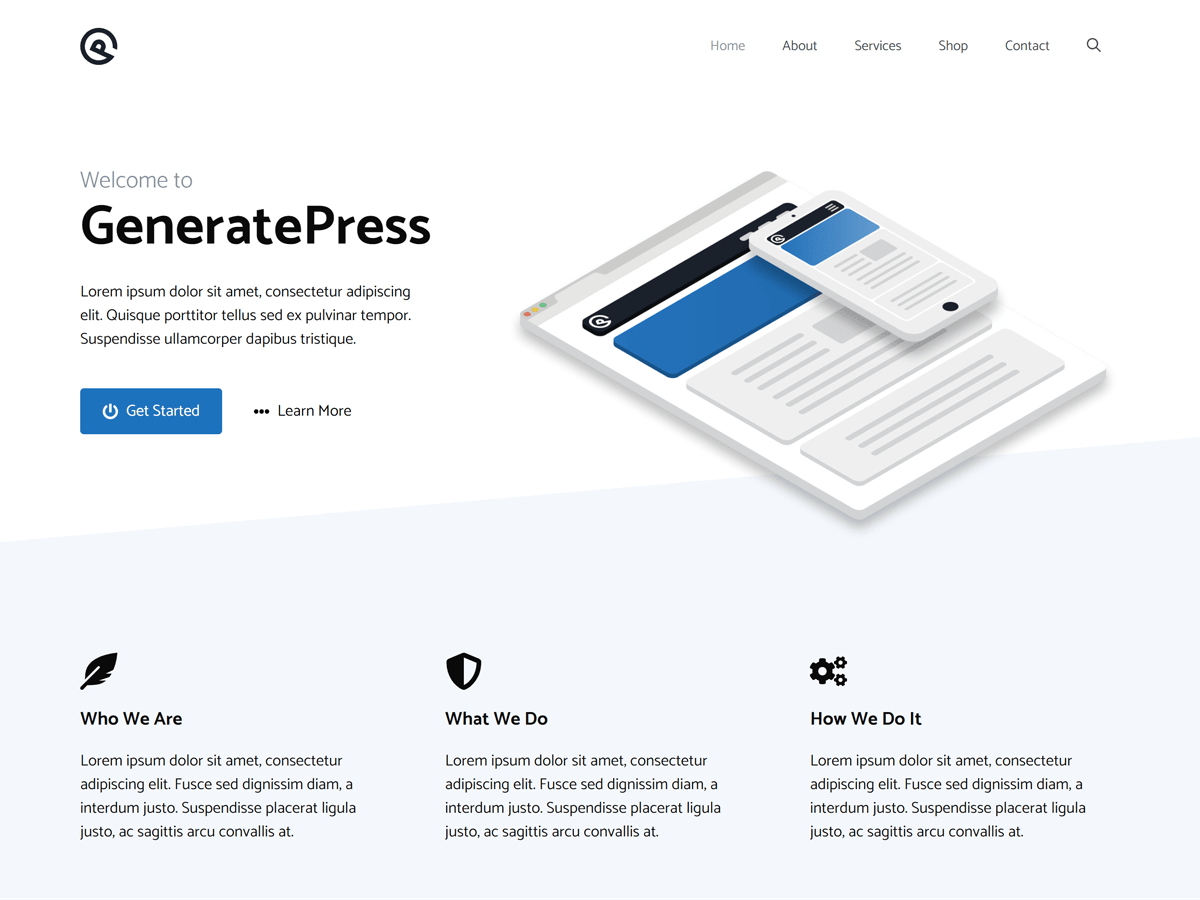GeneratePress has emerged as a leading WordPress theme, celebrated for its speed, flexibility, and user-friendly design. Whether you’re a blogger, developer, or business owner, GeneratePress offers a robust foundation for creating professional websites without delving into complex coding.
What is GeneratePress?
GeneratePress is a lightweight WordPress theme developed with a focus on speed, usability, and accessibility. A fresh installation adds less than 10KB (gzipped) to your page size, ensuring swift load times. It fully integrates with the block editor (Gutenberg), providing enhanced control over content creation. Additionally, GeneratePress is compatible with major page builders like Beaver Builder and Elementor, offering flexibility in design and functionality.
Key Features of GeneratePress
1. Performance and Speed
GeneratePress is engineered for optimal performance. Its minimalistic design ensures fast load times, contributing to improved user experience and SEO rankings. The theme’s clean codebase adheres to WordPress coding standards, promoting stability and security.
2. Customization Options
With over 60 color controls and dynamic typography settings, GeneratePress allows extensive customization. Users can adjust layouts, navigation, and widget areas to align with their brand identity. The theme’s modular structure enables activation or deactivation of features as needed, maintaining a lightweight framework.
3. Compatibility
GeneratePress boasts full compatibility with well-coded plugins, including WooCommerce, making it suitable for e-commerce websites. Its responsive design ensures seamless performance across various devices, enhancing accessibility and user engagement.
4. Premium Add-ons
While the free version of GeneratePress offers substantial features, the premium version unlocks additional functionalities such as the Theme Builder, Starter Sites, and a Local Font Library. These tools empower users to create professional websites with zero coding.
Benefits of Using GeneratePress
1. User-Friendly Interface
GeneratePress’s intuitive interface simplifies the website-building process, making it accessible to both beginners and experienced developers. The theme’s integration with the WordPress Customizer allows real-time previews of changes, streamlining design adjustments.
2. SEO Optimization
The theme’s clean code and fast load times contribute to better SEO performance. GeneratePress is built with a focus on performance, ensuring that your website meets the standards set by search engines.
3. Extensive Documentation and Support
Generate Press offers comprehensive documentation and a supportive community forum. Users can access tutorials, guides, and prompt assistance, facilitating a smoother website development experience.
Comparison with Other WordPress Themes
When selecting a WordPress theme, it’s essential to consider factors like performance, customization, and support. Here’s a comparison of Generate Press with other popular themes:
| Feature | GeneratePress | Astra | OceanWP |
|---|---|---|---|
| Performance | High | High | Moderate |
| Customization | Extensive | Extensive | Extensive |
| Page Builder Support | Yes | Yes | Yes |
| WooCommerce Support | Yes | Yes | Yes |
| Premium Version Price | $59/year | $47/year | $39/year |
| Support | Excellent | Good | Good |
Note: Prices are subject to change; please refer to the respective theme websites for the most current pricing.
Real-World Examples of GeneratePress Websites
Many websites utilize Generate Press to achieve clean, professional designs. For instance, Sleepopolis employs Generate Press to create a user-friendly interface for mattress reviews. Similarly, Woorkup showcases a sleek design optimized for performance, demonstrating the theme’s versatility.
Getting Started with GeneratePress
Installation
- Log in to your WordPress Dashboard.
- Navigate to “Appearance” > “Themes.”
- Click “Add New” and search for “Generate Press.”
- Click “Install” and then “Activate.”
Customization
After activation, customize your site by navigating to “Appearance” > “Customize.” Here, you can adjust layouts, colors, typography, and more to align with your brand. For advanced features, consider upgrading to the premium version, which offers additional modules and customization options.
Conclusion
GeneratePress stands out as a powerful, flexible, and performance-oriented WordPress theme. Its extensive customization options, compatibility with major plugins, and focus on speed make it an excellent choice for various website needs. Whether you’re building a blog, business site, or e-commerce platform, Generate Press provides a solid foundation to create a professional and efficient online presence.










